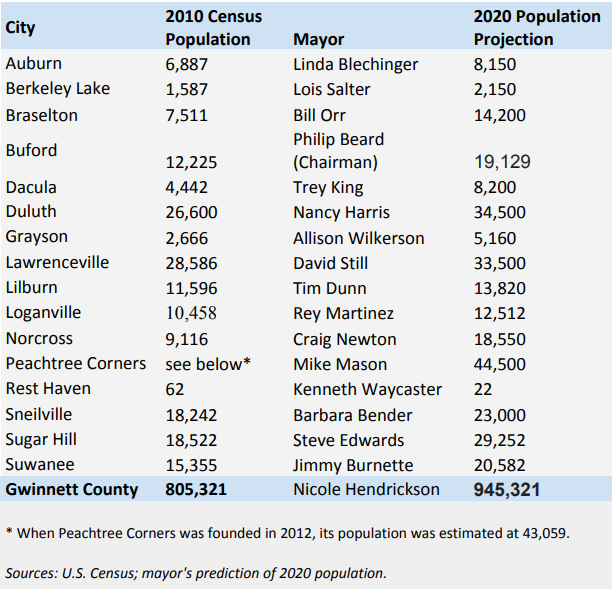By Elliott Brack
Editor and Publisher, GwinnettForum
APRIL 30, 2020 | The 2020 Census state population figures were released this week, providing little information for us except which states gained and lost population. A more detailed and useful release of Census data will come in August, when we will know population figures down to cities and counties.
![]() If nothing else, that means August will be the earliest Georgia can begin to re-draw Congressional district lines, and county commission and school board configurations. Establishing these boundaries will go a long way in determining the make-up of governmental districts. If we are not vigilant, it might turn into political gerrymandering, which can take away rights for minorities.
If nothing else, that means August will be the earliest Georgia can begin to re-draw Congressional district lines, and county commission and school board configurations. Establishing these boundaries will go a long way in determining the make-up of governmental districts. If we are not vigilant, it might turn into political gerrymandering, which can take away rights for minorities.
With all that said, let’s try to have some fun with the Census that will be released in August.
We asked the mayors of the 16 cities in Gwinnett, plus Chairwoman Nicole Hendrickson, to predict what they think will be the population of their political area as of April 1, 2020, the date the Census was taken. We think you will find interesting these projections by the county leader and the mayors of the city leaders.
 Study their projections in the accompanying table.
Study their projections in the accompanying table.
County Commission Chairwoman Nicole Hendrickson predicts the county population at 945,321, up from 805,321 in 2010. That means that the county will have grown by 140,000, or 14,000 a year, since 2010.
In growing Gwinnett, it’s expected that its cities will have increases in population, that is, except for Rest Haven. Mayor Kenneth Waycaster tells me that many of his 62 citizens that were there in 2010 have been annexed into Buford, therefore he predicts that the count for Rest Haven will be 22.
That small hamlet of a municipality, created in 1938 to thwart Buford’s growth, which probably never should have become a city, has been struggling at the Legislature level to de-classify itself as a city. Somehow, such a bill never succeeds. Any good Gwinnett legislator should champion its declassification, to simplify matters.
But back to the overall predictions: already many of the mayors are grumbling about a low count for one reason or another. All this is important for many reasons, the biggest being the population count determines how many different types of federal dollars are headed to the cities.
Even Mayor Mike Mason of the largest city, Peachtree Corners, is anticipating that the official count of its people may not go much past the estimated 43,059 population when the city was created in 2012. He’s figuring on having 44,500 people, and points to areas in his city where he thinks the undercount occurred.
Several of the smaller cities anticipate growth approaching 100 per cent. Bill Orr in Braselton thinks his 7,511 from 2010 will grow to 14,200. Mayor Trey King in Dacula predicts 8,200, up from 4,442. In Grayson, Mayor Allison Wilkerson feels her 2,666 from 2010 will grow to 5,160.
In Norcross, Mayor Craig Newton is predicting 18,550, up from 9,116, because of a large annexation in addition to overall growth.
Lawrenceville has been the biggest city in Gwinnett since 1960, up until Peachtree Corners was founded, so now it is second largest. Mayor David Still’s prediction of 33,500 would place it third if Duluth Mayor Nancy Harris’ anticipation of having 34,500 people is correct.
One more thought: Sugar Hill will vault to fourth largest should Mayor Steve Edward’s anticipation of 29,252 is right.
As for now, simply check out their predictions. We’ll await August to see how close these officials came to predicting the Census.
- Have a comment? Send to: elliott@brack.net









Follow Us